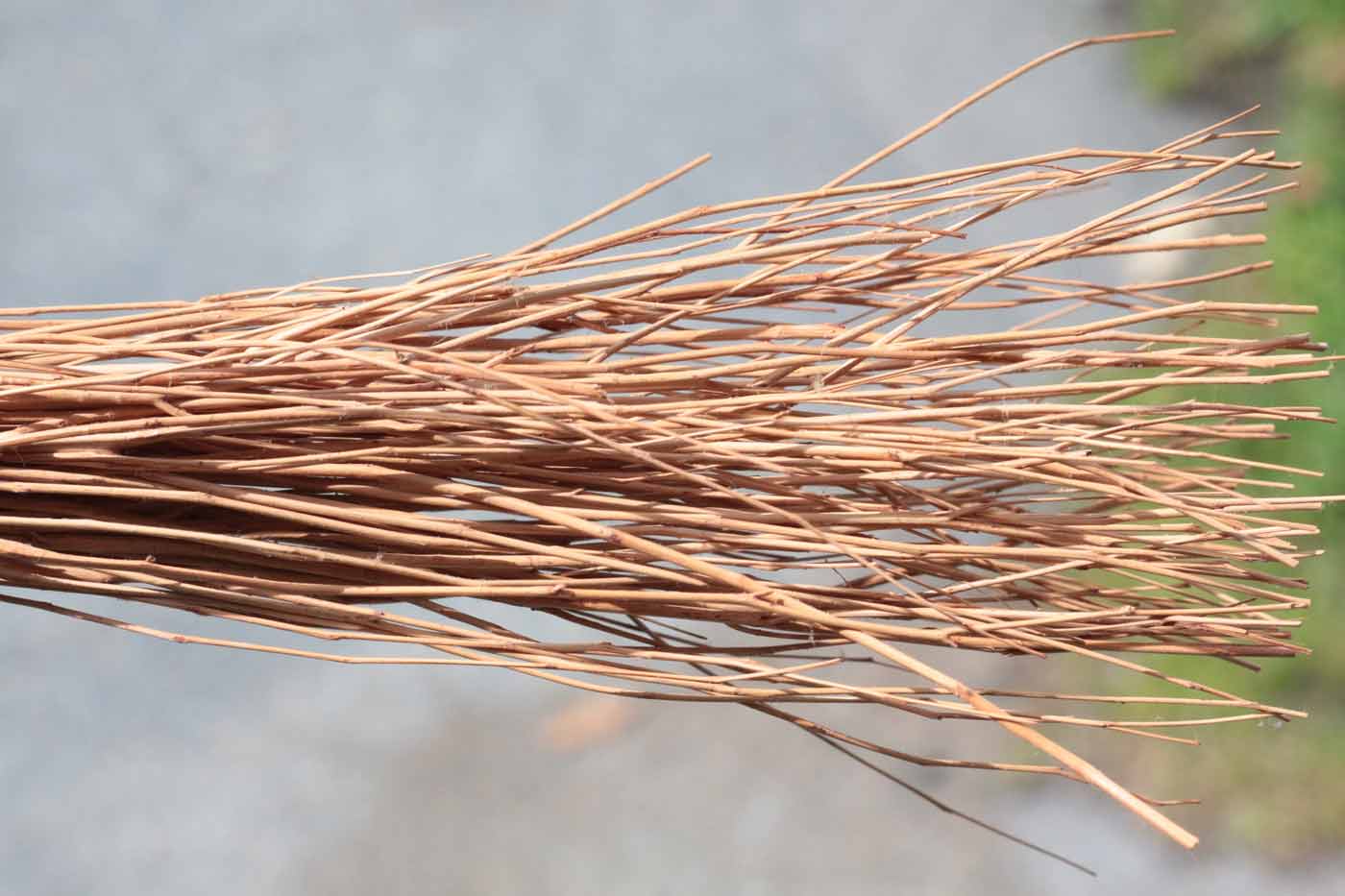My favorite 18th-century cooking utensil
As the Master of Historic Foodways department, I have been cooking in the Colonial Williamsburg Historic Area kitchens for 27 years and have used a lot of different cooking utensils. Sometimes 18th-century kitchen equipment works just as well as — and sometimes better than — modern devices. One of my favorite period cooking utensils happens to be a bundle of sticks! It is more accurately know as a wooden whisk and it has been my experience that these whisks do a better job of whipping air into food than the metal ones you are accustomed to.
Now before you run out to the back yard and start gathering sticks, I should point out that these whisks are made from a very special wood that remains flexible when dry. The best wooden whisks are made from either birch or silver hazel. These whisks typically come from Sweden and are often available for sale in our historic area stores. Since the bark has been removed from the sticks, they are smooth and will not shed bark into what you are whisking. They do occasionally break off while whisking but the twigs will float to the top and can be easily removed.

You may ask “why do I prefer these whisks over the modern ones?” Well, for a couple of reasons; first, there are many of these sticks tied together. This means that you have around 50 different contact points with what you are whipping rather than the 8 or 10 metal hoops that modern whisks use. These additional contact points make the process go faster and allows more air into the material. The second reason is that the sticks are flexible. This allows you to get into and under what you are whipping and creates better air incorporation. Overall, I find the wooden whisks whip much faster and more efficiently than our modern metal ones. Another advantage to these wooden whisks is that they are easy to clean. Just swish it in a sink full of hot soapy water and then rinse it clean under hot water. If the whisk gets really coated in your favorite batter or cake mix hold it under running water first and use your fingers to help loosen food particles. These wooden whisks generally last about two years especially if you care for them well. Please be sure never to put them in the dishwashing machine!

So, while our tendency is to think that modern tools are somehow always improvements over the tools of the past, working in our historic kitchens I have discovered several cases where 18th century tools produce better results and better flavor then modern conveniences.

Wooden whisks are ancient tools that have been around for thousands of years. They were widely available in 18th-century stores and show up regularly in kitchen inventories. So, next time you whip up a fluffy meringue, consider trying a wooden whisk.
Frank Clark is the master of historic foodways and has worked for Colonial Williamsburg for 33 years. One of his favorite things about working with historic foodways is discovering delicious recipes of the past and brewing historic beers. When not at work Frank loves playing and listening to music, traveling, and spending time with his wife and cat.
